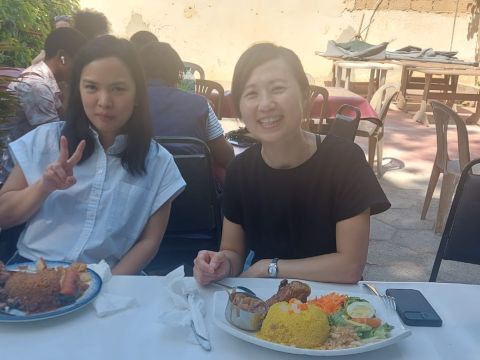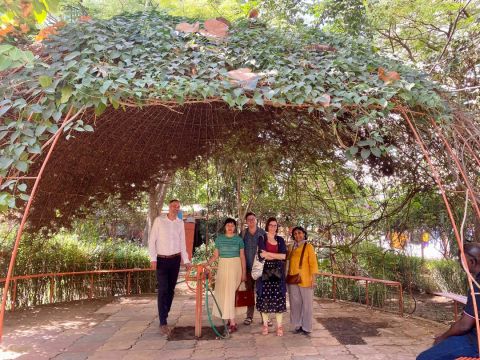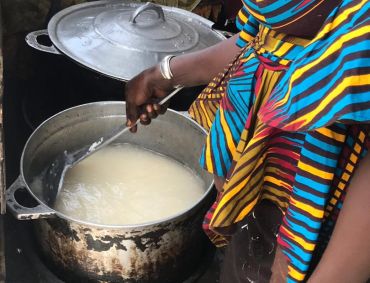Earlier this month, some of us visited Dakar, Senegal to prepare for the upcoming Africa-Asia 3: A New Axis of Knowledge (AA3) ConFest. We met with our primary local partners, Cheikh Anta Diop University (UCAD), and Agence Universitaire de la Francophonie (AUF), and had the chance to explore the city for potential festival venues and community-based collaborators. We were lucky that this visit coincided with the 15th Dakar Biennale of contemporary African Art, under the theme "The Wake" (7th November to 7th December 2024). We met many artists, designers, and members of the African diaspora who were at the different Biennale venues in the city. In this blog piece, Aarti shares some of her photographs and provides a small window into Dakar's academic and cultural landscape.
On the first day of the visit, the IIAS team met with the UCAD and AUF partners and took a tour of the UCAD campus, eating at the faculty restaurant Chez Diabète and enjoying some traditional Senegalese dishes, such as thiéboudiène.
During the tour of the university, we had the chance to see the local campus atmosphere, which included services for students like printing and bookbinding, but also common spaces like the shaded gardens with benches where students spend most of their time reading and studying.
The building of the Institut fondamental d’Afrique noire or Fundamental Institute of Black Africa (IFAN), a research institute of UCAD focused on the study of West Africa
On the second day, we met with our colleague Yann Philippe Tastevin, a UCAD partner and French National Center for Scientific Research (CNRS) research officer for the International Laboratory for Environment, Health, Societies (ESS). Yann Philippe took us to visit Kër Thiosane, an art collective and cultural and social laboratory based in Dakar. Yann Philippe and Kër Thiosane's co-founder Marion Louisgrand-Sylla, gave us a tour of their facilities and neighbourhood, which included among other things, their community garden and playground. Founded on artistic experimentation, open culture, and shared knowledge, the art collective has been a bridge to connect researchers from around the world to life in Dakar with the help of artists, youth activists, and members of the community.
One of the ways they do this is through Defko Ak Niëp, their artistic and transdisciplinary educational fab lab and resource hub for digital creation and citizen artistic practices, in Senegal and Africa. The fab lab aims to be a local platform for the exchange of material & software resources and skills, offering support to project leaders within Africa. This is where Yann Philippe and Marion met, working together on the study of industrial pollution in West Africa through the deployment of particle sensors developed at the fab lab throughout neighbourhoods in Dakar.
Following our visit to the fab lab, we went to the IFAN Museum of African Arts or Musée de l'Institut Fondamental d'Afrique Noire. Also a part of UCAD, the museum was initiated by Léopold Senghor, the first President of Senegal in 1936. It is one of the oldest art museums in West Africa and serves as the primary cultural research centre for studying French West Africa, housing and displaying collections by contemporary African and diaspora artists. It is also a key location for the Dakar Biennale. Even though the museum was closed, we were able to explore the museum garden, and chat with some of the young students who use the space for relaxation and play after classes.
These photographs were a brief look at the first two of the five days we were in Dakar, but even then I experienced quite a bit of life in the city. There is a rich history as well as interesting contemporary initiatives done by and in collaboration with the local community here, and an exciting look at what's to come for HAB and IIAS in Africa-Asia next June.


































